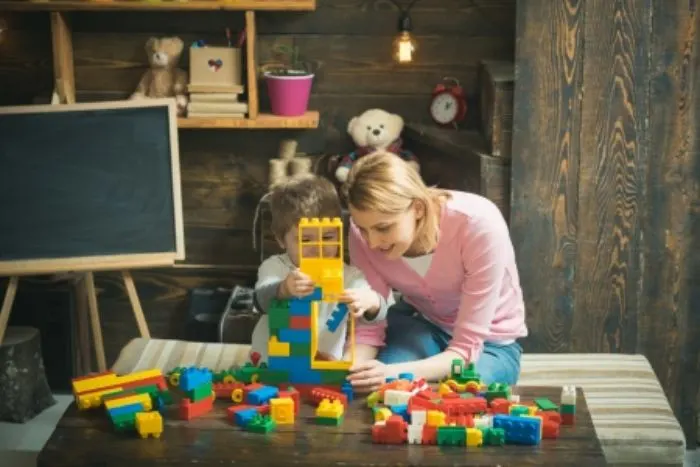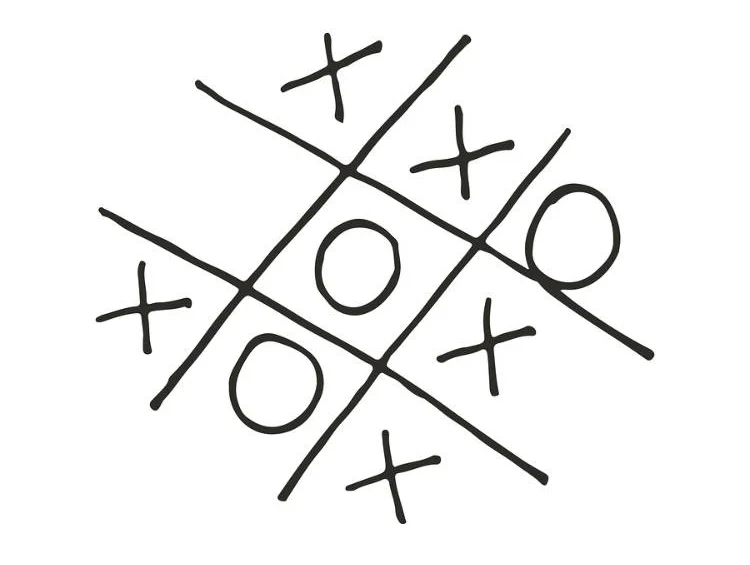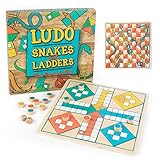During the first years of a child’s life, an important set of cognitive skills known as problem-solving abilities are developed. These skills are used throughout childhood and into adulthood.
Find out what problem solving is, why it’s important and how you can develop these skills with 10 problem-solving games and activities.
What is Problem Solving in Early Childhood?
So, what exactly is problem solving? Quite simply, it refers to the process of finding a solution to a problem.
A person uses their own knowledge and experience, as well as the information at hand to try and reach a solution. Problem solving is therefore about the thought processes involved in finding a solution.
This could be as complex as an adult working out how to get out of a financial crisis or as simple as a child working out how two blocks fit together.
Problem Solving Skills for Kids
Problem-solving skills refer to the specific thinking skills a person uses when faced with a challenge. Some problems require the use of many skills, while others are simple and may only require one or two skills.
These are some examples of problem-solving skills for preschoolers, as listed by kent.ac.uk.
- Lateral thinking
- Creativity
- Analytical thinking
- Decision-making skills
- Initiative
- Logical reasoning
- Persistence
- Communication skills
- Negotiation skills
The Importance of Developing Problem-Solving Skills in Early Childhood
Problem solving is a skill that would be difficult to suddenly develop as an adult. While you can still improve a skill at any age, the majority of learning occurs during the early years.

Preschool is the best time for a child to learn to problem solve in a fun way. The benefits of learning early will last a lifetime and the beauty of learning anything at a young age is that it is effortless.
It is like learning to play an instrument or picking up a new language – it’s just much easier and more natural at an early age.
Of all the many things preschoolers need to learn, what makes problem solving so important?
There aren’t many situations in life, at work or at school that don’t require some level of problem resolution.
Child’s play itself is filled with opportunity upon opportunity to solve all kinds of tricky situations and come up with solutions to challenges.
Problem Solving in Preschool
During the foundational years, children are constantly solving problems as they play.
Here are just a few examples of problem solving in early childhood:
- Resolving a fight over the same toy
- Reaching a ball that’s stuck in the tree
- Forming a circle while holding hands
- Making a bridge to connect two block towers
- Tying or untying a shoe
- Making up rules for a new game
- Trying to get the consistency of a mud cake right so it stops falling over
The more creative play opportunities and challenges children are given, the more they get to exercise their problem-solving muscles.
During free play, there are non-stop experiences for this, and parents and teachers can also encourage specific problem-solving skills through guided activities.
Problem Solving for Older Children
During the grades, children experience problems in many forms, some of which may be related to their academic, social and emotional well-being at school. Problems may come in the form of dealing with life issues, such as:
- Problems with friendships
- Struggling to understand something during a lesson
- Learning to balance the demands of sport and homework
- Finding the best way to study for a test
- Asking a teacher for help when needed
Problems will also form a large part of academic life as teachers will be actively developing this skill through various activities, for example:
- Solving a riddle or understanding a work of literature
- Working on projects with a friend
- Finding solutions during science experiments
- Solving mathematical problems
- Solving hypothetical problems during lessons
- Answering questions and completing exam papers
Children who have had practice during preschool will be a lot more capable when facing these challenges.
Solving Problems in Mathematics
Mathematics needs to be mentioned separately as although it is part of schooling, it is such a huge part and it depends heavily on a child’s ability to solve problems.
The entire subject of mathematics is based on solving problems. Whether you are adding 2 and 3, working out how many eggs will fit into each basket, or solving an algebraic expression, there is a problem in every question.
Mathematics is just a series of problems that need to be solved.
What we refer to as problem solving in Maths is usually answering word problems.
The reason many children find these so difficult to answer is that the question is presented as a problem through a story, rather than just numbers with symbols telling you what operation to use (addition, division, etc.)
This means a child is forced to think carefully, understand the problem and determine the best way to solve it.
These problems can involve various units (e.g. mass, capacity or currency) as well as fractions, decimals, equations and angles, to name a few. Problems tend to become more and more complex over the years.
My experience in the classroom has shown that many, many children struggle with solving word problems, from the early grades right into the senior years.
They struggle to analyze the question, understand it, determine what information they’ve been given, and what exactly they are required to solve.
The good news is that exposing a child to regular problem-solving activities and games in preschool can greatly help him to solve word problems later on in school.
If you need one good reason to do these kinds of activities, let it be for a smoother experience in mathematics – a subject so many children unnecessarily fear.
Problem Solving in the Workplace

Adults in the workplace seldom thrive without problem-solving skills. They are required to regularly solve problems.
As adults, employees are expected to independently deal with the frequent challenges, setbacks and problems that are a big part of every working environment.
Those who can face and solve their own problems will go further and cope better than those who seek constant help from others or cannot show initiative.
Some career websites even refer to problem solving as a universal job skill. They also mention that many employees are not good at it.
Again, although it may seem far removed, learning this skill at a young age will help a child cope right into adulthood and in the working world.

How to Teach Children Problem-Solving Skills
If early childhood is the best time to grow these skills in your young children, then how does one go about teaching them to toddlers, preschoolers and kindergarteners?

Problem solving can be taught in such a way that you expose your child to various opportunities where they will be faced with challenges.
You would not necessarily sit your 3-year-old down and tell or “teach” him all about fixing problems. Instead, you want to create opportunities for your child to grow this skill.
Using the brain to think and find solutions is a bit like working a muscle over time. Eventually, your muscle gets stronger and can handle more “weight.” Your child will learn to problem solve in two ways:
- Incidentally – through free play
- Through guided opportunities provided by a parent or teacher
If you make a point of encouraging thinking through games and activities, your child will develop stronger skills than if you let it all happen incidentally.
Problem-Solving Strategies and Steps
If we take a look at the steps involved in solving a problem, we can see that there are many layers involved and different types of skills. Here are the problem-solving steps according to the University of Ken.
Step 1: Identify the problem
Step 2: Define the problem
Step 3: Examine the options
Step 4: Act on a plan
Step 5: Look at the consequences
Therefore, activities at a preschool level need not present complicated high-level problems.
- A simple activity such as identifying differences in a picture can work on the first skill needed – identifying a problem.
- Playing with construction toys can develop a child’s ability to try various solutions and examine the options when faced with a problem such as trying to find the best way to build something.
- Playing Tic-Tac-Toe would make a child predict the consequences of placing their mark in a particular square.
The most basic of activities can work on all these skills and make children competent solution finders.
How to Teach Problem Solving with Questions
The language you use around your child and your questioning technique will also greatly affect their understanding of a problem or challenge as merely something waiting for a solution to be found.
While your child is playing or when she comes to you with a problem, ask open-ended questions that will guide her in finding a potential answer independently. Use the steps listed above to formulate your questions.
Here are some examples of questions:
- What do you think made the tower of blocks fall down?
- If we build it again, how can we change the structure so that it won’t fall down next time?
- Is there a better way we can do it? If you think of a different way, we can both try it and see which works better.
- Did that work? The tower fell again so let’s try another solution.
Resist the temptation to fix every one of your child’s problems, including conflict with friends or siblings. These are important opportunities for children to learn how to resolve things by negotiating, thinking and reasoning.
With time, your child will get used to seeing a problem, understanding it, weighing up the options, taking action and evaluating the consequences.
Problems will be seen as challenges to be faced logically and not “problems.”
This post contains affiliate links for educational products that I personally recommend. If you purchase through one of them, I earn a commission at no extra cost to you. Read the terms and conditions for more details.
10 Problem-Solving Activities for Preschoolers
Here are 10 simple, easy games and problem solving activities for kids at home or at school. Many of them are the kinds of activities children should have daily exposure to.
1. Puzzles
Puzzles are one of the best thinking activities out there. Each puzzle is basically one big set of muddled-up things to be sorted out and put back together again. Find out why puzzles are important for development.
Children should have regular exposure to puzzles. They are great for developing thinking skills.
The best types to choose are wooden puzzles like these below. They last longer and the frame provides a structure to guide children when building.
- 4 FUN PET-THEMED PUZZLES: The Melissa & Doug Pets Jigsaw Puzzles include four 12-piece puzzles featuring a...
- STURDY WOODEN STORAGE BOX: Our pets puzzles for kids can be easily stored in the included sturdy wooden...
2. Memory games
Memory games will develop your child’s memory and attention to detail.
Get your own memory game cards by downloading the FREE set of printables at the end of the post.
Use pairs of matching pictures and turn them all face down, shuffled, on a table. Take turns choosing any two cards and turning them face up on the table. If you turn over a matching pair you keep the cards and if the pair doesn’t match, turn the cards back over until it is your turn to try again.
Encourage your child to concentrate and pay attention to where the pictures are and try to find a matching pair on each turn.
3. Building with Construction Toys
Construction toys such as engineering blocks, a proper set of wooden blocks or Legos (shown below) should be a daily staple in your home.
Everything your child builds is a challenge because it requires thinking about what to build and how to put the pieces together to get a design that works and is functional.
Leave your child to construct freely and occasionally set a challenge and ask him to build a specific structure, with conditions. For example:
- Make two towers with a bridge joining them together
- Build a creature that stands on its own and has 3 arms.
Then watch your child wracking his brain until he finds a way to make his structure work.
- STIMULATE CREATIVITY & IMAGINATION: Kids building toy are designed as 110 piece including the 6 building...
- LEARNING BY PLAYING: The STEM building blocks Kit would help to develop the imagination and creativity which...
- Hours of educational fun: The Melissa & Doug wooden building blocks set includes 100 durable wooden blocks in...
- Hours of educational fun: The Melissa & Doug wooden building blocks set includes 100 durable wooden blocks in...
- Features a wide range of bricks in 29 different colors, Special pieces include 2 different sets of eyes,...
- Special pieces encourage imaginative building with endless possibilities
4. Activity Books
These activity books are really fun and develop a child’s ability to identify problems and search for information.
- ‘What’s Wrong with this Picture‘
books – These books are great for looking at a picture and spotting what seems a little odd. There may be subtle or obvious problems with the drawings and your child needs to think carefully to notice them.
What's Wrong? Coloring Book (Dover Kids Activity Books)- Pomaska, Anna (Author)
- English (Publication Language)
- Hidden Picture
books – The best hidden picture books are the Where’s Waldo or Where’s Wally books. Children must search through a sea of people to spot Waldo. They might be a bit advanced though, but the Help! book is a good alternative.
Help! My Dinosaurs are Lost in the City!: A Fun Spotting Book for 2-4 Year Olds (Help!...- Books, Webber (Author)
- English (Publication Language)
5. Following Patterns
This simple activity can be played with a set of coloured blocks, shapes or counters.
Simply make a pattern with the blocks and ask your child to continue it. Vary the pattern by changing the colours, shapes or sizes.
This activity will train your child to analyse the given information, make sense of it, recognise the pattern and re-create it.
6. Story Time Questions
Get into the habit of asking questions during your daily story time that develop higher-order thinking skills. Instead of just reading and your child passively listening, ask questions throughout, concentrating on solving problems.
Here are some examples:
- Why do you think the bear did that?
- Do you think his friend will be happy? Why?
- What would you do if you were the monkey?
- How do you think Peter can make things better with his friend?
- If the crocodile had decided not to eat the rabbit, how could the story have ended?
7. Board Games
Board games are an excellent way to develop problem-solving skills.
Start off with simple games like Ludo and Snakes and Ladders to teach the skill of following rules and moving in a logical sequence.
- Double-Header: Enjoy two classic games in Ludo and Snakes and Ladders on this double-faced game board
- Old Classic For A New Generation: Share timeless family games with a new generation of fun, dice rolling...
Then, introduce games that require some planning and deeper thinking, such as Monopoly Junior. Although Monopoly Junior is recommended from 5 years of age, it can still be played with a younger child if a parent is explaining and playing together with the child.
Card games like Go Fish are also great for teaching young children to think ahead and solve problems.
- KIDS CARD GAMES: Unleash ultimate fun with our Hoyle 6-in-1 Kids Playing Cards Multi Game Pack. Each set...
- GROWTH THROUGH PLAY: Help your children blossom with our social skills games for kids. Each of our games...
8. Tic-Tac-Toe
This is a perfect game to teach decision-making skills, thinking before acting and weighing up the possible consequences.

Use a Tic Tac Toe Board or draw a simple table like the one above on paper or a chalkboard.
- Wooden tic-tac-toe game board with eye-catching red, orange, blue, and green color pattern
- Includes white-framed wooden board with indented squares for mess-free play, 10 colored x and O game tiles,...
Take turns to add a nought or a cross to the table and see who can make a row of three first.
Your child will probably catch on in no time and start thinking carefully before placing their symbol. This game can also be played with coloured counters or different objects.
9. Classifying and Grouping Activities
This activity can be done with a tin of buttons or beads or even by unpacking the dishwasher. The idea is to teach the skill of classifying and categorizing information by learning with physical objects. Here are some other ideas for categorizing:
- Separate the washing – mom’s clothes, dad’s clothes, etc; or socks, tops, shorts, etc.
- Empty out the cutlery drawer for cleaning, mix all the utensils up and then sort into knives, tablespoons, teaspoons, etc.
- Classify and sort out the toys in your child’s bedroom together – all books, construction toys, soft toys, etc.
- Play category games.
Here are more button activities for kids.
10. Building a Maze
This activity is lots of fun and suitable for any age. It is also going to be way more fun than doing a maze in an activity book, especially for younger children.
Draw a big maze on the paving with sidewalk chalk. Make passages, including one or two that end in a dead-end. Teach your child to find her way out.
- Non-Toxic Formula: Our sidewalk chalk is specially formulated to minimize chalk dust and is safe for indoor...
- Convenient Packaging: Comes in a 20-piece plastic bucket with a lid and handle for easy transport and storage.
As your child gets better at figuring out a route and finding the way out, make the maze more complex and add more dead-end passages.
Are you a preschool teacher or working in Early Childhood Education? Would you like to receive regular emails with useful tips and play-based activity ideas to try with your children? Sign up for the newsletter!












Uma Devi
Friday 3rd of June 2022
hi maam , This Is Uma from India,Can i get this in pdf format or a book. Thank You
Tanja Mcilroy
Monday 6th of June 2022
Hi Uma, thanks for your message. These articles are not available in PDF, but you are welcome to copy and paste them from the website, as long as you add the reference: https://empoweredparents.co/problem-solving-activities-preschoolers/ Thanks for reading!
Ann
Wednesday 20th of May 2020
Very very useful content. Good work. Thank you.
Tanja Mcilroy
Friday 22nd of May 2020
Thanks Ann.
Kelly
Tuesday 19th of May 2020
Would like to download the free activity pack please.
Tanja Mcilroy
Friday 22nd of May 2020
Hi Kelly, Please download the activity pack on this page: www.empoweredparents.co